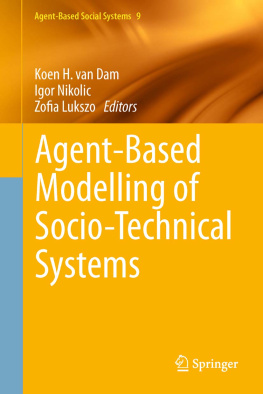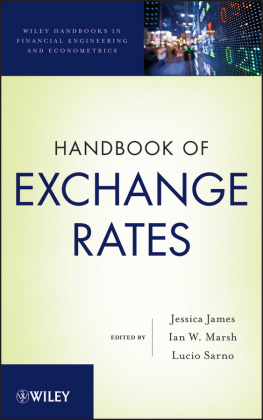Interest Rate Modelling in the Multi-curve Framework
Interest Rate Modelling in the Multi-curve Framework
Foundations, Evolution and Implementation
Marc Henrard
OpenGamma, London, UK


Marc Henrard 2014
All rights reserved. No reproduction, copy or transmission of this publication may be made without written permission.
No portion of this publication may be reproduced, copied or transmitted save with written permission or in accordance with the provisions of the Copyright, Designs and Patents Act 1988, or under the terms of any licence permitting limited copying issued by the Copyright Licensing Agency, Saffron House, 610 Kirby Street, London EC1N 8TS.
Any person who does any unauthorized act in relation to this publication may be liable to criminal prosecution and civil claims for damages.
The author has asserted his rights to be identified as the author of this work in accordance with the Copyright, Designs and Patents Act 1988.
First published 2014 by
PALGRAVE MACMILLAN
Palgrave Macmillan in the UK is an imprint of Macmillan Publishers Limited, registered in England, company number 785998, of Houndmills, Basingstoke, Hampshire RG21 6XS.
Palgrave Macmillan in the US is a division of St Martins Press LLC, 175 Fifth Avenue, New York, NY 10010.
Palgrave Macmillan is the global academic imprint of the above companies and has companies and representatives throughout the world.
Palgrave and Macmillan are registered trademarks in the United States, the United Kingdom, Europe and other countries
ISBN: 9781137374653
This book is printed on paper suitable for recycling and made from fully managed and sustained forest sources. Logging, pulping and manufacturing processes are expected to conform to the environmental regulations of the country of origin.
A catalogue record of this book is available from the British Library.
A catalog record for this book is available from the Library of Congress.
Contents
List of Figures
List of Tables
Preface
The first lines of this book were written in 2006. At the time the term multi-curve framework, which is used for the books title, had not been coined and my idea was only to write a couple of pages for a note. In the meantime, August 2007 changed the course of writing on interest rate curve modelling for ever.
Festina lente.
Latin saying
Personal translation: Haste slowly.
Why did it take me so long?
Chacun sa mthode... Moi, je travaille en dormant et la solution de tous les problmes, je la trouve en rvant. (Each his own method... Myself, I work sleeping and the solution to all problems, I find it dreaming).
Drle de drame (1937) Marcel Carn
This means a lot of nights spent working to dream up all these pages.
The starting point of the reflection was my quest to answer the question What is the present value of an FRA(Forward Rate Agreement)? in a convincing way. I could not find a satisfactory answer in the literature. The answers I could find were either it is trivial, or a description of a replication argument for which it was not acceptable to discuss the numerous hidden hypotheses. Discussing the hypothesis was not politically correct as a scientist nor as a business executive. For the former, it questioned a foundation of quantitative finance, and thus the developments built on those foundations. For the latter, it was not seen positively by board members and supervisors as it casted doubts on accounting figures may be rightly so and had legal implications.
The reason for my interest in discounting is that
Gentlemen prefer bonds.
Andrew Mellon 18551937
Ironically, the first article to come out of those reflections, titled Irony in derivatives discounting, was published just one month before the now famous August 2007. The publication was not a prediction of what would happen in the derivative market just after and should not be seen as a premonition. Neither should it be seen as a cause of the crisis. It was nevertheless an indication of inconsistencies in the practice of derivative pricing that were not answered by a coherent theoretical framework.
The book, which started, unbeknown to its author, seven years ago, is intended to be a description of the current status of the subject, which is now called the multi-curve framework. It borrows from the developments of numerous practitioners and academics working on the subject. The length of the bibliography, with most of the references dating from 2009 and after, is a witness of the activity on the subject over the last years.
The book profited from fruitful conversations with and comments on drafts by Marco Bianchetti, Damiano Brigo, Antonio Castagna, Stthane Crpey, Christophe Laforge, Andrea Macrina, Fabio Mercurio, Massimo Morini, and Chyng Wang Tee.
This book would not have been possible without the support of OpenGamma. The company encouraged me to complete the book and gave me the time to do it. The quality of the book was improved by discussion on its content with OpenGamma colleagues: Casey Clement, Yukinori Iwashita, Elaine McLeod, Soila Patajoki, Joan Puig, Richard White, and Arroub Zine-Eddine.
It is also my pleasure in this book to follow in the footsteps of giants in the art of relevant and irrelevant quotes. I have done my best in that regard, but I can not claim to match them.
Beyond the written literature, another source of inspiration for the development of this book was the participation in numerous practitioner and academic conferences and the perspicacious questions and remarks by their attendants. While preparing the final version of this book, I also had the pleasure of lecturing on the subject in the mathematical finance masters program at University College London. The book profited from the course preparation and from the questions, naive in appearance but fundamentally deep, asked by the participants.
In the book I use the term we with the general and vague meaning of the author, the quantitative finance research community and the readers. The terms I, me or my are used with the precise meaning of the author personally with his opinions and bias. The term I should be used as a warning sign that the sentence contains opinions and may be not only facts. You have been warned!
Hopefully the reader will find as much interest in the subject as I have over the last seven years. Hopefully he will also be intrigued, surprised, amused and may be amazed at some of the subject facets.
Oh, by the way, my quest is still on! Im still asking myself What is the present value of an FRA?, even if the question has changed to What is the collateral quote of an FRA?. A question that is the source of insomnia ...and may be the starting point of another book in a couple of years.
Enjoy!
| 
| Introduction |
1.1 9 August 2007
9 August 2007 is probably the day that the multi-curve framework became paramount, even if the term had not yet been coined at that time. What happened on that date can be found in history books. From an interest rate curve modelling perspective, it can be summarised by
Houston, we have a problem!
Attributed to the crew of the USs Apollo 13 14 April 1970
Next page







